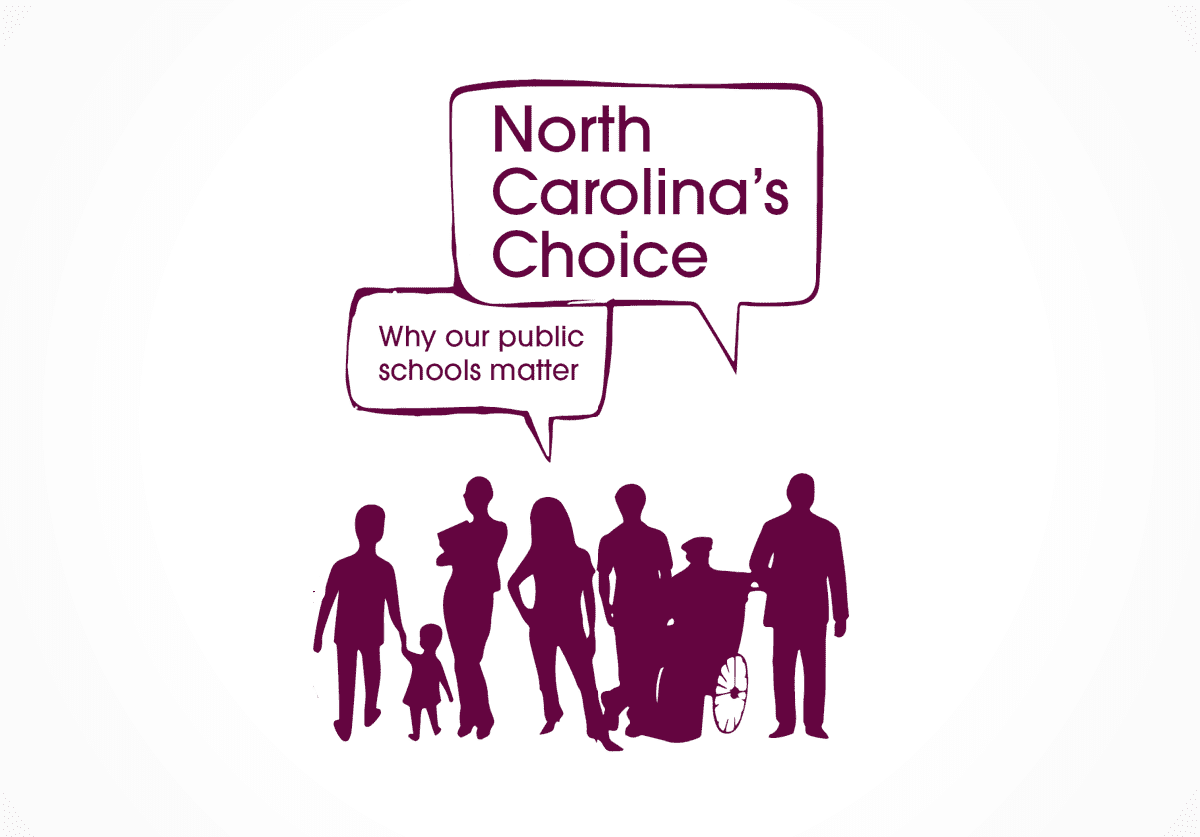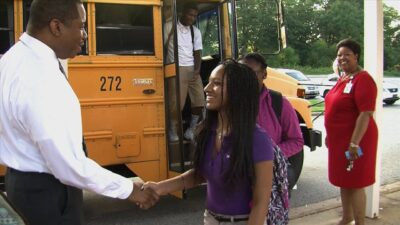
In 2022, CNBC named North Carolina No. 1 for business in the country “for putting partisanship aside.” In 2023, North Carolina received the ranking for a second time for its “world class workforce.” But CNBC noted, “the political harmony that has helped [make] the state so competitive is fading.”
As a recent expansion of school choice is implemented in North Carolina and the race for superintendent of public instruction garners national attention, EdNC has published a book titled “North Carolina’s Choice: Why our public schools matter.”
“It has to be that student outcomes are leading,” says a quote in the book from a brief released by Chiefs for Change, “and adult inputs are following.”
EdNC’s research and reporting is based on our travel to all 115 school districts, 58 community colleges, and 100 counties, as well as interviews with educators and community leaders.
The purpose of the book is to encourage everyone from people in community to policymakers in Raleigh to talk out loud about how policy changes to public education bear on the role public schools play in economic development statewide, economic impact locally, as anchor institutions in community, in building the diverse workforce the future requires, the provision of early childhood education, postsecondary access and opportunity, and the perception of this state we all call home.
“Only state revenue and political will stand in the way of expanding school choice and at the same time investing in public schools,” finds the book.
In North Carolina, there are 115 school districts and 2,700 schools, including more than 200 charters, nine lab schools, three residential schools, and one regional school. In addition to charter schools and lab schools, public schools offer an abundance of choice: year-round, magnet, language immersion, single-sex, early college, career academies, virtual academies, alternative schools, and more.
Those schools collectively serve more than 1.5 million students, the future workforce of North Carolina.
“There’s one word that describes economic development,” said Cecilia Holden, the president of myFutureNC, recently. “What is that? Education. Education and economic development are one and the same.”
Public education is an industry with revenue of more than $16 billion annually in local, state, and federal funding, and in 54 of the 100 counties that makes the school district the largest employer.
Locally, our school districts are a source of jobs — lots of jobs. And they are good jobs, in terms of stability, benefits, and career progression.
School districts employ educators, but they also employ janitors and mechanics, bus drivers and nutritionists, speech pathologists and school nurses, electricians and plumbers, accountants and technicians, and more. It’s an educated workforce with a diverse skill set, and that attracts other businesses to communities across the state.
School districts are important to their local economies because of their purchasing power. In 2021-22, purchased services totaled $295,805,673 and supplies and materials cost $285,354,792.
“We buy a lot of power,” says Scott Elliott, a former superintendent, “but we also buy a lot of light bulbs.”
As anchor institutions in communities across North Carolina, public schools provide comprehensive student support services in addition to school meals. These services are provided to all students, including those served across 18 exceptional children programs. School districts serve as a safety net for our students and our state.
North Carolina has moved from bipartisan consensus on public education to a great debate, and EdNC’s book assesses how that debate is keeping the state from focusing on the transformation of education needed for the Fourth Industrial Revolution, which will shape the workforce needs and the economy of the state moving forward.
EdNC’s award-winning team of journalists and public policy researchers stay on the road from Murphy to Manteo in North Carolina to make sure all of our state has access to essential news, important stories, and your perspectives about the major trends, issues, and challenges bearing on education.
Our mission is to expand educational opportunities for all students in North Carolina, increase their academic attainment, and improve the performance of the state’s public schools.
EdNC.org has 2 million pageviews and 1.2 million users a year. Our reach is extended through social media with 50,000 impressions a day, by sending out more than 300,000 emails a week, with almost 25 million impressions from Google search annually, and distribution via news aggregators like Google News and Apple News nationally and the NC Tribune and the Insider in state. About 40% of our audience is now outside North Carolina.
In an annual survey with more than 2,400 respondents, 93% found EdNC provides a neutral view of what’s happening in education.
Here is a PDF of the book that is free. A printed copy can be ordered here.
We invite the media to write news articles about the book or publish this article as an op-ed. Here are our republication guidelines.




